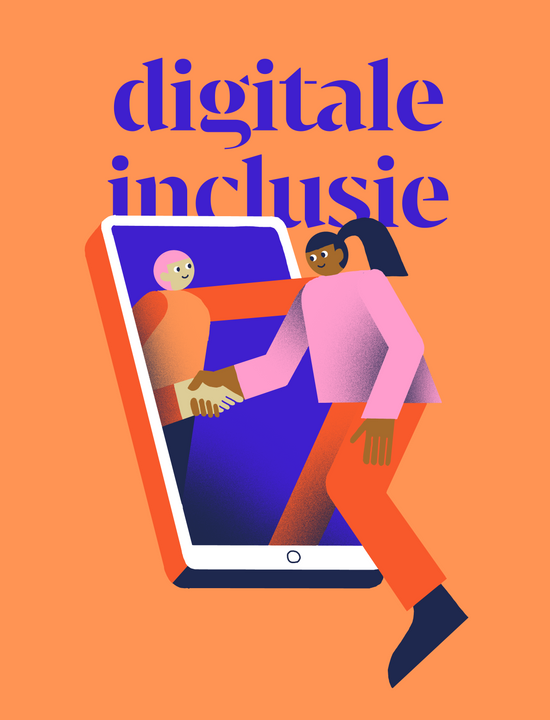The 7 building blocks
Discover the 7 building blocks for a sustainable e-inclusion policy here. Each building block contains a short description and testimonials about inspiring insights and projects from the e-inclusion field.
Building block 1: Keep a broad vision of e-inclusion
A digitally inclusive policy starts from a comprehensive vision on digitisation and its opportunities as well as pitfalls. You need to keep lots of factors into account, like various perspectives, profiles, and competences.
Building block 2: Know and measure what you (need to) do
A strong, inclusive digital policy is based on thorough knowledge of the situation of your target audience, their needs, and their opportunities. Regularly question them about their needs and measure the impact and effects of your digital initiatives.
Building block 3: Work with partners
A sustainable, inclusive digital policy cannot be achieved alone: you need people who are able to create policy across domains, experts in topics like exclusion, digital literacy and technology, partners who can effectively reach your target group, financing, infrastructure, … Join forces within your city or community.
Building block 4: Provide support networks for professionals
Many of the professionals who work with digitally excluded groups may have the required close contact with their target audience, but lack digital knowledge and competences themselves. See how you can inspire volunteers and personnel at schools, associations, social and youth organisations, municipal or city services, and your own employees when it comes to digital and media literacy.
Building block 5: Provide high-quality digital access for everyone
Affordable, high-quality access to hardware, software, and the internet is a prerequisite for digital inclusion. There’s more to this than whether or not a device is available. Various factors are at play, including price, quality, maintenance, and the need for infrastructural adaptations depending on each person’s situation.
Building block 6: Work on basic digital competences
Even if someone has access to digital applications, they may not be able to use them. This requires specific knowledge (knowing), competences (being able) and attitudes (wanting, daring) – it’s more than just technical ‘button-pushing’. Those who are socially and economically vulnerable offline often have that same vulnerability in the online world. That’s why, besides access, you need additional media literacy skills in order to effectively solve problems, create digital content (like a CV), critically assess information, and consciously think about your own behaviour online.
Building block 7: Integrate inclusivity into your digital services by default
No matter how digitally connected and literate people are, a digital service has no value if it is useless, not user-friendly, or unsafe. It’s up to providers, owners, and developers of digital services to consider the needs of the target audience and to build accessibility and user-friendliness as well as safety into the application from the start. Inclusive design is a must.
